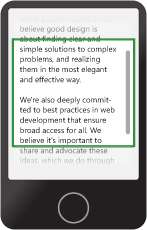 Application Craft
Application Craft (AC) is a very ambitious attempt to put modern HTML5 development, including mobile, onto the cloud.
The premise is this:
Sign up, sign on, start developing. All for free.
And you really can. It sports a WYSIWYG drag'n'drop form designer, a comprehensive smorgasbord of droppable widgets with property sheets, including layout containers and integrated jQuery Mobile UI components, and an embedded Javascript IDE within the browser. (It really reminds me of an online Visual Studio-like IDE for HTML5 and Javascript mobile apps.)
The big advantage of all this is that you can develop and deploy in your favorite HTML5 browser without the need for a web server to host on.
And what's more, they claim to support desktop, tablet and phone all from the same app, using in-built adaptive layout strategies.
The widgets can even be bound to a datasource, either inherent to the Application Craft framework, or linked to a SQL database on a different server.
Application Craft does have a monetizing model based on number of developer accounts, data storage and bandwidth.
New features are server-side javascript modules and file-based data sources.
My TakeOne of the things that impressed me about this framework is that it has the potential to get prototypes and proof of concept apps up and running at virtually no cost.
I have a couple of pet projects I'm working on that are well suited to this. One is completely green-field and the other is a mobile version of an existing web site with its own database backend.
I found the online documentation quite comprehensive, if a little thin, and the many short video tutorials are very helpful to get you started, but are really just feature explanations with examples. A real step by step tutorial would be very helpful.
The online forums are worth using. The AC team is very responsive and will often offer to diagnose an app that you're having problems with if you're willing to share your password with them, or seem more than willing to do a Skype session with you to talk you through an issue. It's obvious they care about their product. However, I do wonder if it takes off, whether they will be able to keep this level of customer care up. For now, though, it's fresh air for early adopters.
It's clear that the AC team has covered their bases - there are ways to preview populated forms instantly in the IDE, run your app in Live mode on the desktop. There are plenty of hints and tips in the documentation on how to test out your app in desktop phone simulators and to set it up for debugging.
And because this is all hosted, if you happen to have an iPhone or iPad laying around, it's easy to test it out on the real thing.
AC also support wrapping with PhoneGap as a service if you really want your warez on the App Store or Google Play (the store formerly known as the Android Market).
All of this may seem too good to be true. Well, I can assure you it's all true, but it's an ambitious product, and there are definitely some rough edges. After playing with it for a couple of weeks, here's the good, the bad and the wish list:
The Good- The Javascript IDE is almost as good as day-to-day coding in Eclipse. It has themes, a level of context sensitivity
- It's built on jQuery and jQuery Mobile, and so both of these libraries are available for your use if you know how to use them.
- The layout containers make it really easy to construct a well-behaved UI. Combined with the adaptive layout rules, you really can make a one size fits all UI, if you have the patience.
- An impressive set of UI widgets with the ability to add custom widgets of your own make or from third parties.
- Ability to create multiple apps within your console and have them up and running on your own application craft sub-domain in no time.
- Being a hosted end-to-end IDE, you can develop on one PC and pick up where you left using any other.
- A built in security model to ensure your developments stay private until you're ready to release them to the world.
The Bad- Many web developers are used to tweaking styles and CSS to adjust the look of their apps. AC all but alienates you from that. Not good.
- Application Craft's data storage is a good idea but really badly implemented. It's cumbersome and too complicated for anything but the very simplest of apps. I got the feeling that this was just an experiment that went wrong. Try to build out a data model using the AC system and you'll soon be tearing your hair out wondering where the productivity gain is. AC would do much better to recommend that users find a free database hosting service and link it up to the AC front end, instead of implying that they have a fully integrated solution.
- I'm still not really sure how customizable AC is, unless you're game to create custom widgets to fit into their framework. I get the impression that if you step outside the walled garden, you're going to wish you hadn't strayed.
The Wish List- The AC API has quite a bit to be desired. It's quirky and overloaded, and has some annoying idiosyncrasies and inconsistencies. It could really do with a clean up by someone who has, well, developed an API intended to be used by other developers. It is a high level API and pretty powerful. However, when AC says you'll be programming in javascript, you'll really be programming in their version of event driven javascript, with a few lines of jQuery for the informed.
- True fixed headers and scrollable panels. The true fixed headers are promised with a near future integration with jQuery Mobile's updated widget set. The absence scrollable panels is more obvious when you upsize your app from phone-size to more complex pad-sized layouts.
- It would be nice to develop AC apps on iPad and iPhone devices on the go. Unfortunately the advanced AC IDE tools only seem to run inside modern desktop browsers.
ConclusionI was able to get things done in AC, but not without several failed experiments and lots of property tweaking. Without a good understanding of HTML I'm not sure if I'd have made it without giving up. I'm not sure that it's really quite ready for prime-time just yet, but for getting a free hosted prototype hooked up to an online database it definitely has some merits.
Application Craft holds a lot of potential in its hands. I wish them good luck in reaching it as they round out and refine out the service.






